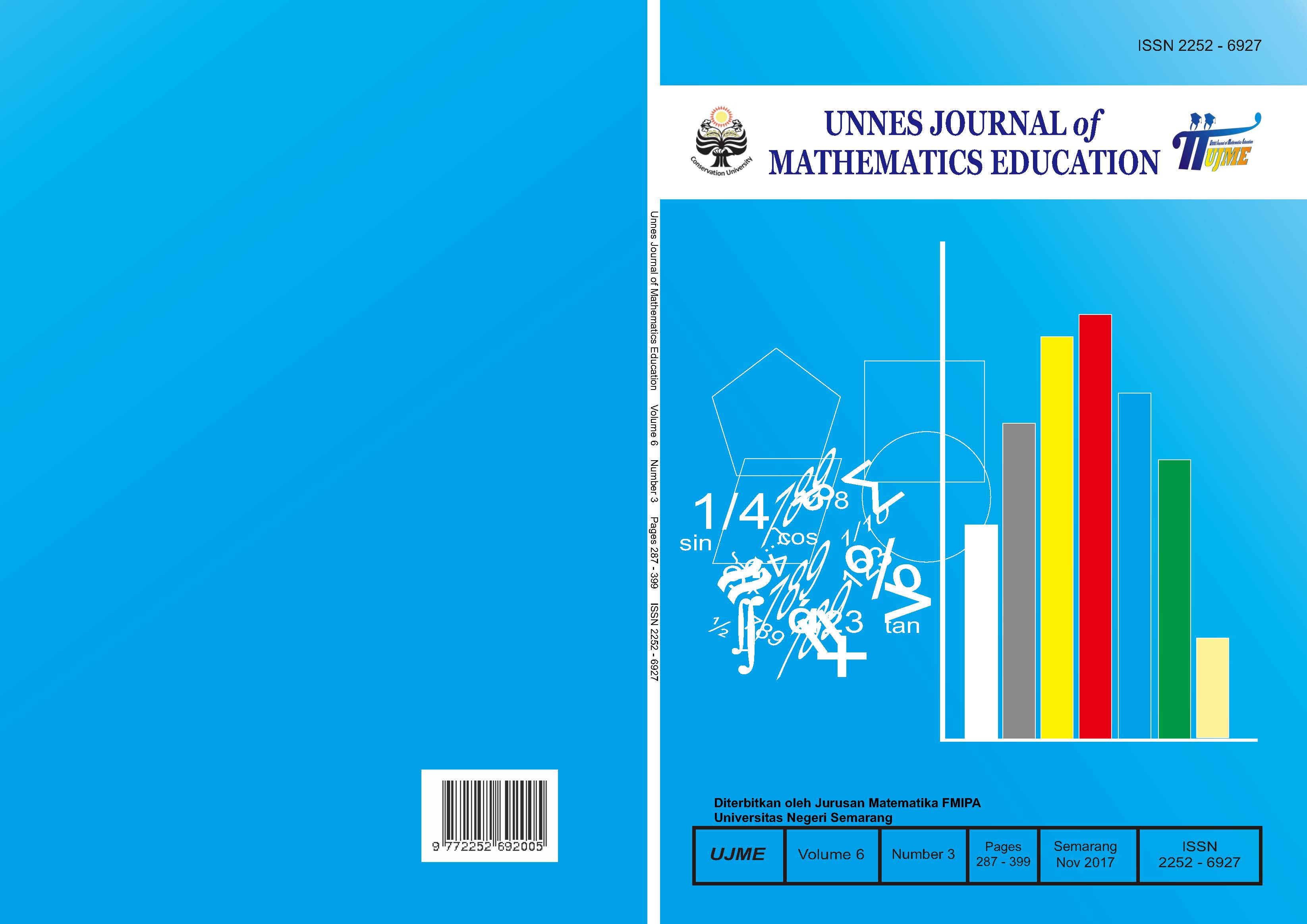The Student’s Analysis of Creative Thinking Process in Solving Open Problems viewed from Wallas Model on Problem Based Learning Model
##plugins.themes.academic_pro.article.main##
Abstract
The purpose of this study was to (1) gain the description of PBL mathematicis lesrning model quality towards students; (2) creative thinking ability in solving some open ended problems before the PBL model aplied to them; and (3) getting the description of creative thinking process in solving the open ended problems based on Wallas model in PBL of learning for each Creative Thinking Skill Test CTST. This research is using mixed methods. The result of Mathematical Creative Thinking Skill Test (MCTST) is analyzed quantitatively using classical completeness test and also average difference test. Furthermore, the result of MCTST is analyzed qualitatively to gain the result of students’ Creative Thinking Skill Test (CTST) before PBL learning mode to be applied to them. To obtain research data used questionnaire methods, documentation, testing, observations, and interviews. The results showed that: (1) the quality of learning in both categories, (2) Before the model was applied to the class G, 7th grade students of SMP N 30 Semarang the total score of CTST were: 2 students for CTST4, 16 students for CTST3, 15 students for CTST1, and 3 students for CTST0; and (3) the analysis of the interviews and observations show that each CTST has different characteristics of creative thinking process on preparation phase, incubation, illumination, ang verification.
##plugins.themes.academic_pro.article.details##
References
Badan Penelitian dan Pengembangan Kementerian Pendidikan dan Kebudayaan (Balitbang Kemendikbud). 2016. Survey Internasional PISA. (Online). Tersedia di http://litbang.kemdikbud.go.id/indeks.php/survei-internasional-pisa. [diakses pada 15-09-2016]
Danielson, C. (2013). The Framework for Teaching Evaluation Instrument. Virginia: Associate for Supervision and Curriculum Development.
Depdiknas. (2004). Peningkatan Kualitas Pembelajaran. Jakarta: Depdiknas.
Hudojo, H. (2003). Pengembangan Kurikulum dan Pembelajaran Matematika. Surabaya: UM Press.
IEA. (2011). TIMSS 2011 Mathematics Achievement. Amsterdam: IEA.
Purnomo, D. J., Asikin, M., & Junaedi, I. (2015). Tingkat Berpikir Kreatif pada Geometri Siswa Kelas VII Ditinjau dari Gaya Kognitif dalam Setting Problem Based Learning. Unnes Journal of Mathematics Education, 4(2).
Silver, E. A. (1997). Fostering Creativity through Instruction Rich in Mathematical Problem Solving and Problem Posing. Zentralblatt fur Didaktik der Mathematik (ZDM) – The International Journal on Mathematic Education. Online. Tersedia:http//emis.de/journals/ZDM/zdm973a3.pdf
Siswono, T. E. Y. (2007). Konstruksi Teoritik Tentang Tingkat Berpikir Kreatif Siswa dalam Matematika. Jurnal Pendidikan, Forum Pendidikan dan Ilmu Pengetahuan 2(4).
Siswono, T. E. Y. (2008). Penjenjangan Kemampuan Berpikir Kreatif dan Identifikasi Tahap Berpikir Kreatif Siswa dalam Memecahkan dan Mengajukan Masalah Matematika. Jurnal Pendidikan Matematika “Mathedu†3(1).
